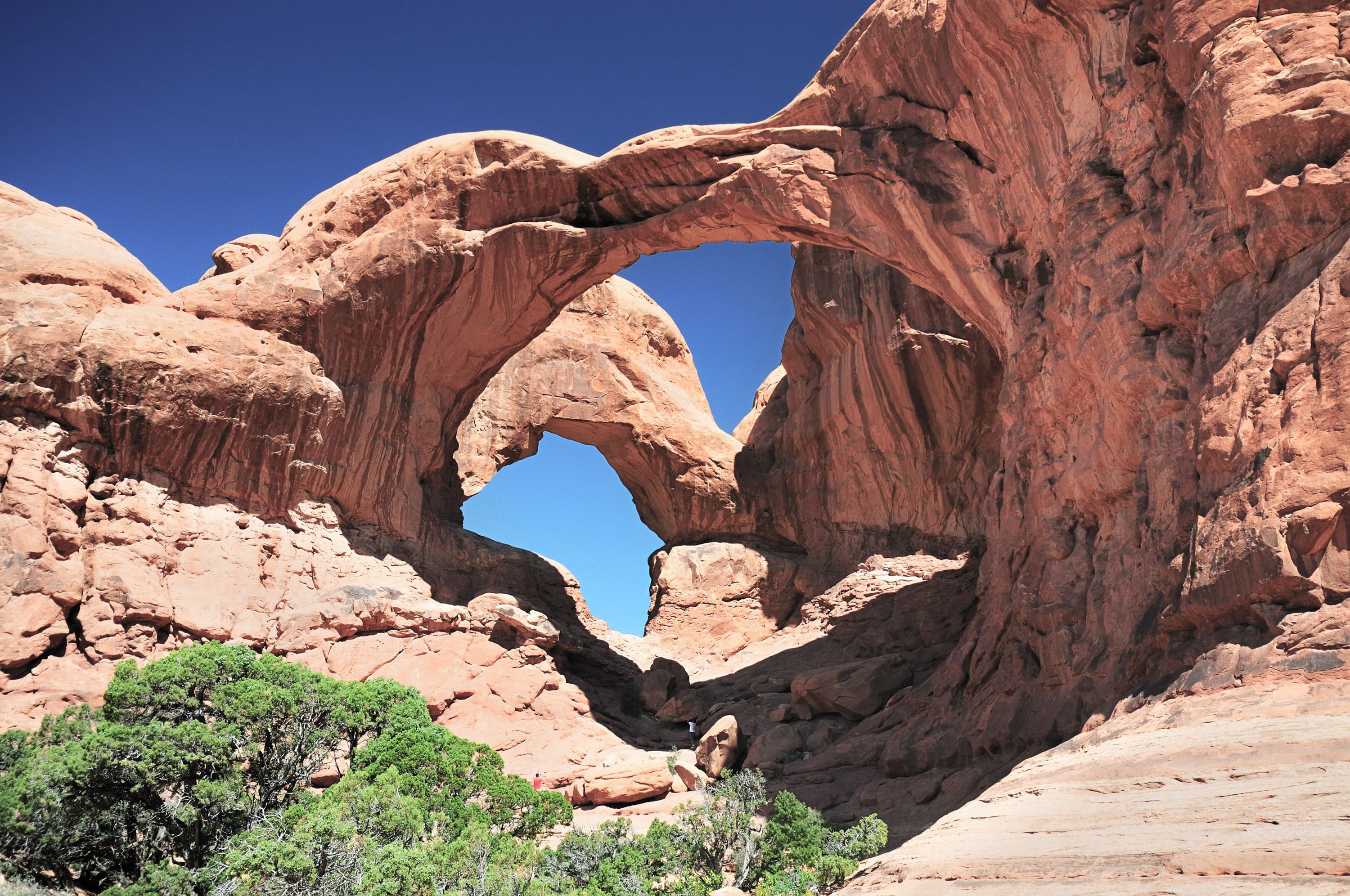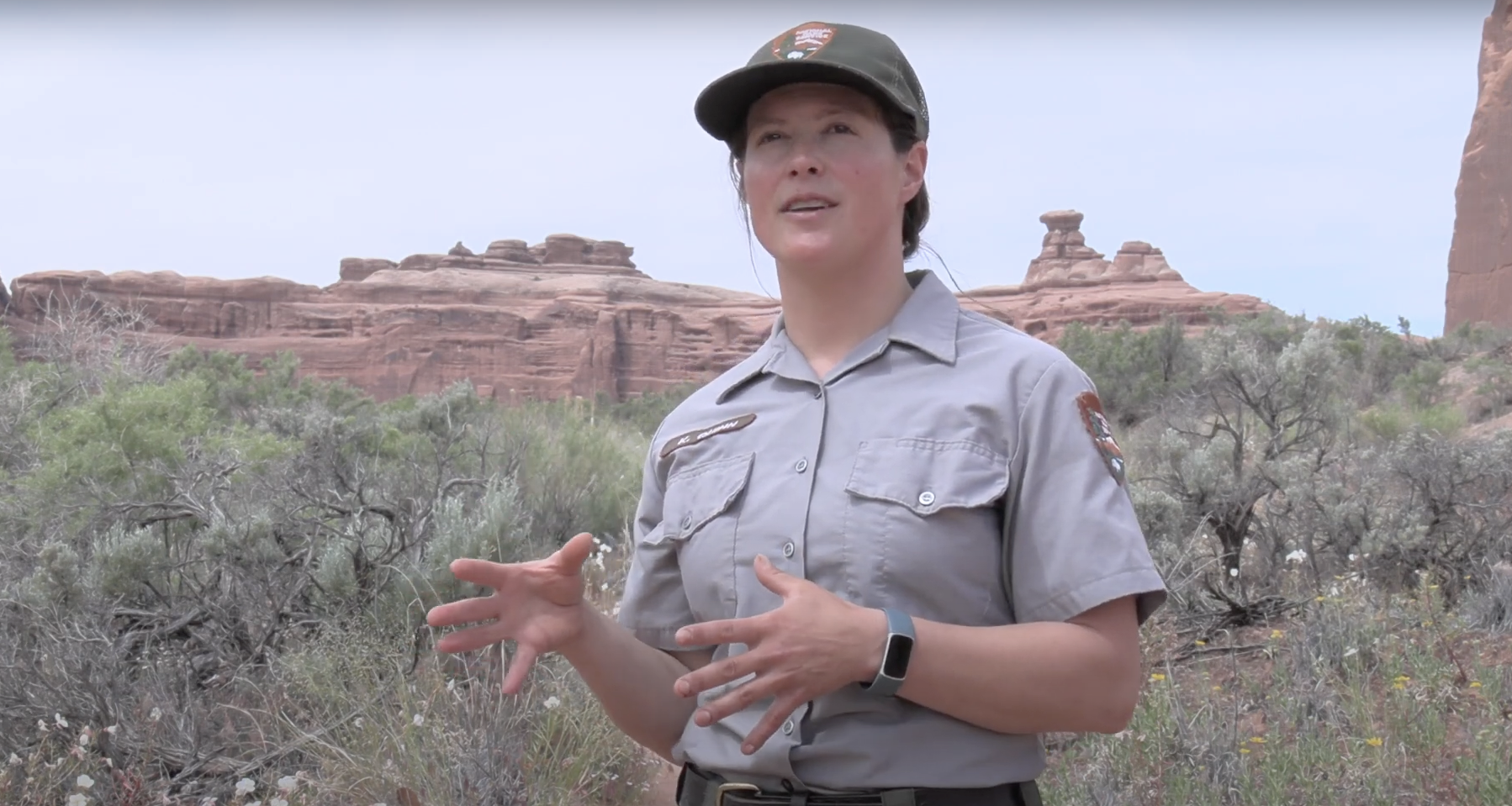Managing Invasive Species in Arches National Park Means Using IPM

Most people driving through Arches National Park in southeast Utah look up, marveling at the unique rock formations that give the park its name.
Kelli Quinn looks down.
Quinn is a National Park Service team lead for the vegetation and ecological restoration program at Arches and three nearby national parks and monuments and it’s her job to keep the native, natural landscape as native and natural as possible.
“Our program really focuses on early detection and rapid response and we focus those efforts on high visitor-use areas and roadsides,” she said. “So we’ll look at trailheads for invasive species like puncturevine and we’ll patrol the roads looking for a lot of other new, novel species.” Roadsides and trailheads are often points of introduction invasive species.
Quinn and her team also focus a lot of attention on Courthouse Wash and Salt Wash, the two perennial streams inside the park, because they are home to a large diversity of native wildlife and areas where invasives can more easily become established and change the ecosystem.

“We manage invasive species in Arches National Park and all of the national parks because invasive plants can out-compete our native plants for resources such as water and nutrients,” she explained. “They can also alter the fire regimes in these areas which aren't incredibly adapted for fires.”
Tamarisk, an invasive shrub or small tree, is a good example of the latter concern. It proliferated along the streams, then was previously controlled by introductions of the tamarisk beetle which caused dieback and formed stands of dead wood.
“In the two perennial streams in Arches National Park, cottonwood trees are keystone species in these riparian areas, used by beavers, birds of prey and other wildlife species,” Quinn said. “If we didn’t remove the tamarisk, a fire could ignite the tamarisk and flash through the riparian areas and damage the cottonwoods – and that would be pretty devastating.”
So in the case of tamarisk, it isn’t enough to slow the spread or kill the existing trees to stop them from out-competing cottonwoods. The dead tamarisk also has to be cut down and physically removed to reduce fire danger.
Adaptive Management
Like any integrated pest management-based approach, pest management in Arches isn’t uniform across the landscape.
“We don’t have a one-size-fits-all approach,” Quinn said. “Depending on the population size and location, we’ll change our management plans.”
Russian knapweed in Salt Wash, for example, has been well established since at least the 1990s, so management there includes biocontrol with Russian knapweed wasps and gall midges and targeted herbicide treatments if the knapweed threatens to spread or form monocultures in previously managed areas. But there isn’t much Russian knapweed in Courthouse Wash, so any detections there would be managed aggressively with a goal of eradication.
“It’s the same for Canada thistle,” Quinn added. “We have really dense Canada thistle in Canyonlands National Park but it’s not super prolific at all in Arches. Our management goal for any Canada thistle in Arches would be to eradicate it.”
A Challenging – and Changing – Climate
The park’s hot, dry, windy climate, close proximity to the town of Moab and millions of annual tourists all make invasive species management and restoration challenging, but some of those challenges are also opportunities.
For instance, the park recently became part of the Play, Clean, Go network and plans to install new signs educating visitors about ways they can prevent spreading invasive species.
“So brushing off your boots and cleaning your backpacks before you come to the park, or even from one trailhead to another because not every trailhead has the same plants,” Quinn said. “I think outreach goes a long way in invasive species management.”
Some things outreach won’t help. Already the park is looking to areas south to see what invasive plants they’re facing today that Arches may face tomorrow.
“Our climate is projected to get warmer, and with that drier, so we’re thinking that our southern neighbors in the Mojave and Sonoran deserts, who already experience that type of weather, can give us some insight on what plants we’re going to see creeping up.”
One plant that’s made the jump from the southern deserts to the national parks and monuments in Utah is Arabian schismus grass, which first appeared at the Arches Visitors Center.
“We tried to contain it there and failed,” Quinn said. “Invasive annual grasses are really hard to manage anyway, but that one is extra hard. It’s one of the first to germinate, in November-ish depending on rains, then it overwinters and is one of the first to produce seed. But unlike cheatgrass, which flowers, goes to seed then dies, schismus continues to flower and produce seed as long as its moisture requirements are met. I’ve seen flowering schismus as late as July.”
And that’s why management adaptation is always on the table. The best time to treat schismus would be in the winter or early season, but many of the vegetation management crew are seasonal employees and start later in the spring.
“We’re working on that,” Quinn said. “Our program is growing. We have more seasonal employees and permanent staff, but there will always be limitations on what we can do.”
Knowing that, Quinn tries to keep her spirits up, head down and boots clean, doing what she can to preserve one of the most iconic scenic areas in the nation.